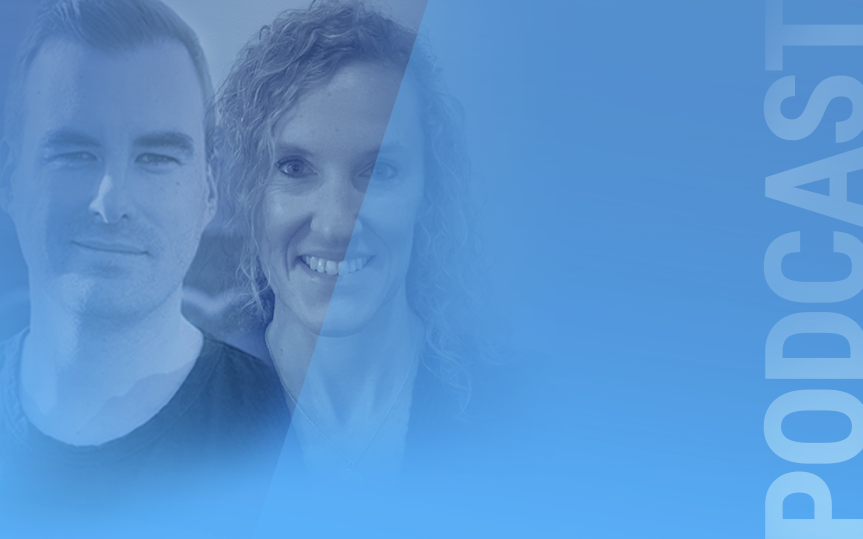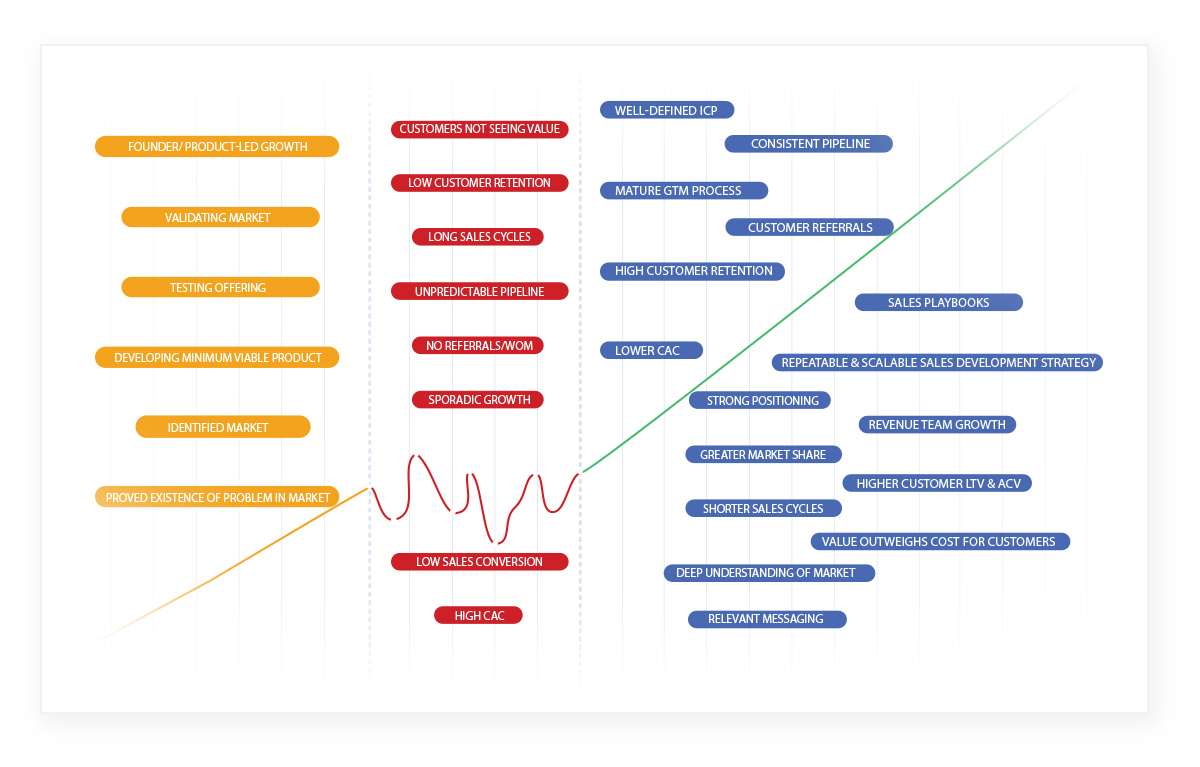Sales Development Methodology

Predictable Revenue’s Sales Development Methodology has been a work in progress for the better part of a year and a half. Not only has the methodology been built from the ground up but it’s also been battle-tested with clients, podcast guests, as well as internally to ensure it stands up in the real world.
The team is so excited to share the Sales Development Methodology with you all and this is the first part of the initiative. On this latest episode of the Predictable Revenue are Collin Stewart, Carrie White, and Sarah Hicks.
Collin, Founder and CEO of Predictable Revenue, laid the foundations for the Sales Development Methodology, primarily covering the strategic principles aspects of the playbook, before collaborating with other expert contributors and writers.
Sarah is the Lead Coach at Predictable Revenue and outstanding host of the Predictable Revenue podcast. In her role, she helps clients implement the different elements of the Sales Development Methodology into their in-house outbound sales engines.
Carrie White is the Senior Vice President at Predictable Revenue. She spent approximately two decades at IBM operating mainly in the areas of Software Sales, Hardware Sales, Management, as well as Coaching & Training. More recently Carrie has lent her extensive sales expertise to a number of high-growth startups as Director of Sales, Director of Alliances, Senior Vice President as well as Coaching & Training.
A New & Improved Sales Development Methodology
The new Sales Development Methodology defines the core ideas and principles that go into building a revenue team but as a point of emphasis separates them from the tactics required to build your sales development team. There are three key principles you need to address before you start building a playbook: positioning, pace, and practice.

Note: The Sales Development Methodology helps you understand all the pieces you’ll need to transition from your first customer acquisition channel to your first scalable customer acquisition channels.
3 Strategic Principles Of The Sales Development Methodology
Positioning
Positioning encompasses your product-market fit, the market you’re in, your unique selling proposition, and how relevant it is to the audience you are selling to. In a nutshell, “if you don’t have your product-market fit right, everything you do downstream is going to be multiplied by zero.” In other words, poor positioning negatively impacts any other endeavors your revenue team carries out.
Pace
While the overall methodology remains the same, it must be applied differently because companies have different financial strategies and varying levels of resources to invest. As such, the pace element is where you blend the market with how much you want to spend and how quickly you want to move. This involves figuring out aspects like the styles of sales development you can afford to implement or the amount of money you can afford to invest towards customer acquisition.
Practice
The practice principle is where the rubber meets the road. It’s that last step, which establishes how well the team works together. Do you have everything you need from marketing, sales, revenue, and product teams? Does your website align with the messaging you’re sending out to your prospects? Running a well-oiled machine in this regard is critical to the success of the end-to-end Sales Development Methodology.
The Playbook Elements
Targeting
Targeting is the first element of the playbook. Mindset from a strategic perspective is huge in this aspect. It covers your approach to targeting your ideal customer profiles and buyer personas, and translating it into accounts and contacts that you’ll pursue.
The wrong mindset or failure to identify your target audience will leave you all over the map. A recent development with a Predictable Revenue client that wanted to outsource their entire sales development function, sums this up perfectly. Within a month, there was a realization that the client had no insight into their target customer profiles, the key industries and segments they wanted to pursue, or even the resources required to generate interest. It’s difficult to hit targets if you don’t know where exactly you’re going.
So, the headlights approach when it comes to targeting helps you stay in your lane. This mindset is a prerequisite to all the playbook elements that follow.
Team
Once you’ve figured out your targeting, the next step involves building the right team. You want to get the right people in the driver’s seat to be your road warriors and get the work done.
From a strategic point of view onboarding in sets of 2 is the golden approach — 3 is a crowd! That way, for any of the teachings and learning you’re doing in terms of outreach, you at least have a couple of people involved in testing the messaging and whether you picked the right buyers, targets, and so on.
Thereafter, ensure that your team understands the rules of the road. This includes making sure they know their job roles, responsibilities, required skills and attributes, and the KPIs they’ll need to achieve.
Tools
Similar to the critical parts that make up a car, you need the right tools to build an effective outbound sales engine. In this regard, a minimum viable product is similar to a minimum viable toolstack. You need the minimum to start and then grow from there. A great CRM system to manage customer relationships, sales engagement tool for tracking and defining sequences quickly, auto dialers, social and video, and alias emails among other tools make up the minimum viable toolstack.
Prospecting
The prospecting stage enables your company to get an understanding of all the different elements to date (targeting, team, and tools). Be sure to document the processes. As you’re going out and prospecting, keep track of reply rates, the best time of day for outreach, different types of messages and sequences you need to factor in, objections, templates, and so on. If all this activity you’re doing to prospect buyers and accounts isn’t captured in a type of playbook, you’ll lose a lot of potential momentum — let alone resiliency, iteration and the ability to scale the business.
Qualification
Similar to the way you’d look for the right fit in dating, you need to determine whether your product or service is a fit for the customers or prospects you’re targeting. Ensure there’s a clear objective on your qualification criteria. That’s because after you’ve done the prospecting, you want the outbound reps to ideally book a meeting and have a successful hand-off to the account executives (AEs) so they can ultimately drive the funnel pipeline. As such, you want to figure out the uniquely identifiable criteria that will determine who your qualified prospects are.
Follow-Through
It’s hard to believe how often companies don’t follow-through. Once the qualification criteria has been met and the outbound SDR hands-off to the AE (or whichever role you define), there has to be a set process by which all notes are documented to maximize the opportunity for refinement. Recording everything with immediacy is the best approach. It helps to ensure that you close the loop, add value at every step, and keep up the momentum.

The Chain-Link System
This Sales Development Methodology is based on a chain-link system whereby the performance of the whole is only as good as its weakest link. The various components don’t exist in a vacuum, so failure in one area will impact the overall outcome. It’s similar to the way sales development is an extension of the revenue department, which is an extension of the product team, which is an extension of the company. The different elements must work together in unison for optimal results.
Conclusion & Milestones
Inbound and outbound are different and need to be handled differently. So many companies waste so much value by having their SDRs schedule great meetings and then account AEs come in using inbound scripts or call flows, which normally results in opportunities fizzling out.
It’s a momentum game! Inbound deals already have momentum because the prospect’s interest and motivations are clearer from the start. With outbound, there is no momentum yet. Outbound deals operate on different timelines so be conscious of circumventing the 90-day fallacy trap. There is a huge misconception that if a potential deal hasn’t progressed in 90 days, any further contact should cease. This couldn’t be further from the truth. If you’re communicating with the right person at the right company and you solve a problem, you should definitely continue the conversation.
The very best salespeople get into deals early. It may require more work and may take longer but there’s definitely excellent value in long-term follow up.
NO TIME TO READ?
Listen On:
How can you carry on your duties as an entrepreneur to create and develop, if your business is also relying on you to bring in sales?
Considering the relationship, time, and effort a founder/entrepreneur can spend on sales vs. developing their products, building your own SaaS Sales Playbook comes in handy.


